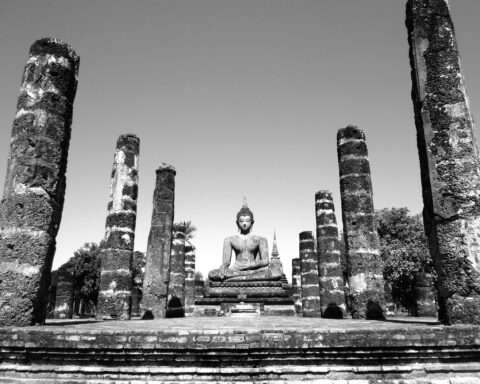Table of Contents
Anxiety is a complex of mental and physical symptoms. Low state of mind level or unhappiness is often the most prominent sign. The typical residential or commercial property of these signs is a reduced activity level in parts of the brain.
Depression might offer several of these symptoms:
- Low mood level or sadness.
- Absence of delight or interest in activities that were cheerful prior to.
- Pessimism.
- Feel of regret of something without any substantial factor to feel so.
- Inferiority ideas.
- Irritability.
- Slowness in the thought process.
- Slowness in analyzing sensorial stimuli.
- Slowness of food digestion or other internal physical processes, and signs caused by this slowness, for example pumped up stomach, constipation or difficulties by urination.
- Slow physical reactions.
Depression can be a mild disease that only causes some annoyance in the life, but can also get extremely serious and make a person totally not able to work and unable to participate in social life. By anxiety of some severity, there is likewise a greater danger of suicide.
Depression can occur in all age classes. In teenagers lack of interest in school work, withdrawal from social life and difficult state of mind can be signs of depression.
THE PHYSIOLOGICAL CHANGES THAT PRODUCE THE SYMPTOMS
By anxiety there is a decreased amount of neurotransmitters in parts of the central nervous system, primarily deficiency of serotonin, but also to some extend of noradrenalin, acetylcholine, dopamine or gamma-amino-butyric acid (GABA), or the nerve cells do not react correctly by stimulation from neurotransmitters. A neurotransmitter is a signal substance that sends the nerve signal through the junctions between 2 afferent neuron.
Serotonin and noradrenalin cause afferent neuron to send out impulses along to other afferent neuron, and thus increase the activity in the brain. Shortage of these compounds triggers sluggishness in parts of the brain, and that again causes the depressive symptoms.
The function of GABA is the opposite, particularly to decrease some nerve impulses, primarily those triggering stress and anxiety and panic reaction. Absence of GABA triggers greater stress and anxiety and simpler panic reaction. Yet, absence of this transmitter also appears to cause depressive signs. This is because an expensive activity in some brain procedures might slow down other processes.
There are numerous causes and subtypes of anxiety with various physiological systems included.
TYPES OF DEPRESSION
Depression is typically divided into subtypes according to displayed signs.
1. Mono-polar depression and dysthymic disorder
By mono-polar anxiety there are pure depressive symptoms. Moderate cases of mono-polar condition that do not impact an individuals capability to work and to participate in social activities are frequently called dysthymic condition
2. Bipolar disorder (manic-depressive disease) and cyclothymic disorder
In this condition there are periods with symptoms of anxiety – the depressive phase, alternating with durations of elevated state of mind level with increased psychological and physical activity – the manic phase. In the manic stage, the impacted person also sleeps poorly and has concentration problems. A mild form of this disease is called cyclothymic condition.
3. Manic condition.
This condition is characterized by unusually elevated state of mind, by unrealistic optimism, by absence of sleep and by hyper behaviour. Many psychiatrists think that this disorder is merely the exact same disease as bipolar affective disorder where the depressive face has not yet took place.
4. Depression with mainly physical symptoms
Often the physical signs of depression are alone or dominant, when it comes to example: Digestion problems, irregularity, troubles with urination, slow reaction to sensorial stimuli or slow physical responses.
REASONS FOR DEPRESSION
2 or more elements can have a result concurrently to trigger depression Anxiety can be an independent disease, or a part of other disease. Depression is likewise divided into different subtypes according to cause.
1. Reactive depression
This illness is simply a result from psychological tension, physical struggle or mental straining without correct rest or sleep over a long period of time period. The straining will simply break the nerve system or diminish the organism from nutrition essential for the nerve system to work appropriately.
2. Endogenous anxiety.
When there has not been any period of stress, straining or absence of rest that can describe the condition, the condition is typically called endogenous depression. Inheritance is believed to belong of the cause.
3. Anxiety by physical illness
Depression or depressive signs may be a symptom of physical illness. This is perhaps the most common reason for anxiety. Normally there are three categories of diseases that provide anxiety:
Illness typically associated with depression are: Cardiovascular disease, Parkinson’s illness, stroke, hypertension or Cushing’s syndrome.
Mononucleosis or influenza might activate depression that continues after the infection has actually gone.
By lack of thyroid hormones, hypothyroidism, the metabolism in the whole body is decreased, including the production of neurotransmitters in the brain. Therefore anxiety is an essential sign of hypothyroidism.
4. Depressive signs as a consequence of unsound way of life
A basic unsound way of life with too less exercise, excessive of stimulants like alcohol, coffee or tea, too less of important nutrient and too much of sugar and fat might give depressive symptoms, in addition to physical issues.
5. Postnatal anxiety
Ladies will typically have a duration of anxiety after pregnancy and berth of the infant Pregnancy and berth is physically and psychologically tiring, and might drain pipes the body for nutrient. This in turn can cause depressive symptoms.
6. Seasonal depression
Anxiety can occur in cold and dark durations of the year and go away in warm and light periods. Light stimulates brain activity, and absence of light is a causative factor.
TREATMENT OF ANXIETY
Serious or prolonged anxiety is frequently treated with anti-depressive medication. Medicines used against depression normally increase the level of neurotransmitters like serotonin in the central nervous system, or they mimic the neurotransmitters.
The medications mostly used today increase the serotonin concentration by reducing the elimination of serotonin from the area around afferent neuron. Examples of this medication type are: Fluoxetine (Prozac), fluvoxamine (Luvox), paroxetine (Paxil), escitalopram (Lexapro, Celexa), sentraline (zoloft).
By bipolar disorder in the manic face, heavy tranquilizers (neuroleptica) are utilized to stop the manic symptoms. By bipolar illness, lithium salts are often utilized to support the condition, and prevent new outbreak of depressive or manic faces.
Psychiatric therapy is sometimes used by anxiety, usually in mix with medication.
Often severe anxiety is treated by using electrical shock through the head, electroconvulsive therapy. The shock causes epileptic eruption of nerve signals through the brain and this provides cramps throughout the body. The cramps are alleviated or dropped in using anaesthesia before the electroshock. This type of treatment is questionable, considering that it can trigger amnesia and is believed of causing mental retardation. The possibility of mental retardation is nevertheless denied by a lot of psychiatrists.
By seasonal depression, light therapy possibly helpful.
Modification of way of life must constantly be thought about by anxiety or depressive symptoms. Lifestyle steps can sometimes suffice to treat depressive symptoms prior to a severe anxiety develop. Lifestyle adjustments can be:
- To slow down a difficult life with excessive work or activities.
- Enough rest and sleep.
- A great diet plan with enough of required nutrients.
- Some exercise.
- Meditation.
- Supplement of vitamins, minerals, anti-oxidants, lecithin, amino acids and vital fats.
- Stimulants like coffee or tea might assist versus depressive sensations in moderate quantity. Nevertheless, if you are a heavy user of these stimulants, you must cut down on your consumption.
There exist nutritional items in the marked to help versus depressive signs. These consist of components that the brain utilizes as foundation for neurotransmitters, for instance amino acids and lecithin. They likewise frequently contain vitamins and minerals that the brain utilizes as tools to produce neurotransmitters, especially vitamin B6.
Supplements may further contain natural extracts that trigger higher brain activity similar to anti-depressive medications, however might have less side effects.








